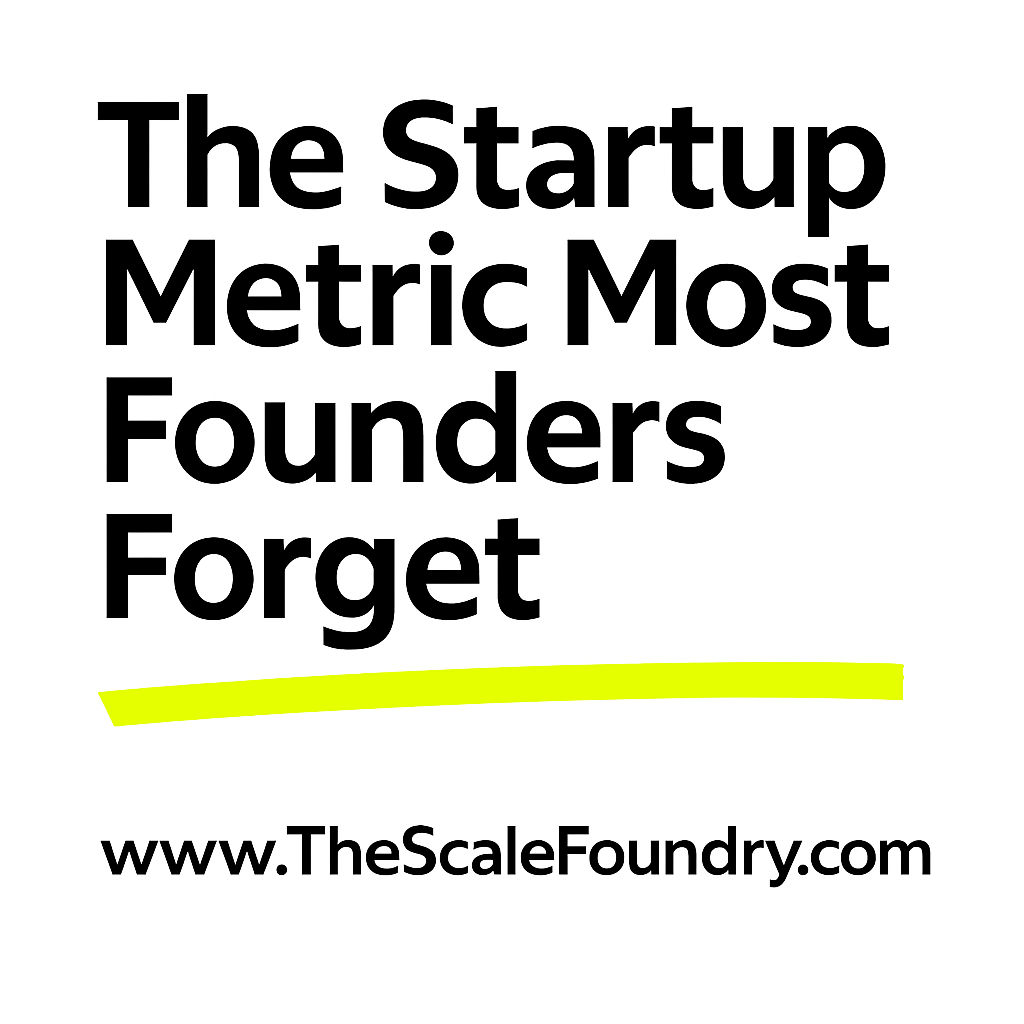Startup Metrics & Fundraising Strategy
The Startup Metric Most Founders Forget
Everyone tracks burn. But the best founders track something more powerful: velocity. It’s not just about how long your runway is—it’s about how fast you’re moving forward. In fundraising, momentum isn’t a feeling. It’s a measurable signal investors bet on.
Every founder knows their burn rate.
Monthly spend. Runway. Cash out date.
You can’t walk into an investor meeting without it.
But here’s what most founders don’t bring to the table:
Velocity.
Burn tells me how long you can survive.
Velocity tells me whether you’re actually getting anywhere.
At The Scale Foundry, we work with dozens of founders raising rounds, navigating tough markets, and pushing toward scale. Across all of them, one pattern separates the ones who get a “yes” from the ones who get ghosted:
→ Momentum.
→ Milestones.
→ De-risking. Fast.
What Is Startup Velocity—and Why Does It Matter?
Startup velocity isn’t about moving fast for the sake of speed.
It’s about how quickly you’re compounding confidence in your business model.
In investor terms, velocity is the clearest proxy for:
• Execution capacity
• Strategic focus
• Founder clarity
• Market traction
Velocity answers these critical questions:
• Are you reducing risk quarter over quarter?
• Are your experiments driving faster decisions?
• Is your team shipping more value in less time?
That’s what makes velocity a real metric—not just a vibe.
Burn vs. Velocity: What’s the Difference?
Let’s break it down:
Burn rate tells an investor how long you’ll survive.
Velocity tells them whether you’re actually getting anywhere.
Here’s the difference:
• Burn rate is reactive. It shows how fast you’re spending money and how long your runway lasts if nothing changes.
• Velocity is proactive. It measures how quickly you’re testing, iterating, shipping, and learning — driving strategic progress, not just spending time.
• Burn rate is a defensive metric: it tells you when you’ll run out.
• Velocity is an offensive signal: it tells others how fast you’re compounding confidence in your business.
• Burn can be extended by cutting.
• Velocity can only improve through clear execution and decisive leadership.
Investors don’t just want you to last — they want to know you’ll move the needle while you last.
The VC Perspective: Betting on Learning Speed
Venture capital is about asymmetric returns—and fast pattern recognition.
When a VC sees a startup that:
• Hits key milestones 30–60 days ahead of schedule,
• Adapts from customer feedback in weeks (not quarters),
• Launches iterations and builds strategic moats at speed,
…it triggers one thought:
“This founder can execute. Let’s go.”
Because velocity doesn’t just de-risk.
It excites.
Metrics That Signal Velocity
So what should you measure (and showcase) to prove momentum?
Here are some strong leading indicators:
• Cycle Time Reduction: How long does it take from idea to shipped update?
• Milestone Compression: Are you consistently hitting key goals ahead of schedule?
• Pipeline Progress: From PoCs to contracts—are deals moving faster?
• Team Cadence: Is your team making weekly wins visible and cumulative?
• Customer Learning Rate: Are insights from the field driving product and GTM faster?
Remember: busy ≠ productive.
Velocity isn’t about hustle—it’s about direction + execution.
Founder Check-In
Before your next raise, ask yourself:
• Could you show a timeline with learning velocity over the past 90 days?
• Could you point to tangible proof of momentum beyond revenue?
• Are your investors seeing not just motion… but measurable progress?
If the answer isn’t a clear yes—now’s the time to change that.
Final Thought:
Great founders don’t just track what they’re burning.
They measure what they’re building, how fast, and why it matters.
Momentum wins meetings.
Velocity wins deals.
Want to sharpen your startup metrics before your next raise?
Book a Capital Readiness Session with The Scale Foundry:
We’ll review your burn, velocity, investor narrative, and build a timeline of proof that speaks to what VCs want to see.
Smarter growth. Stronger leadership. Real results.
